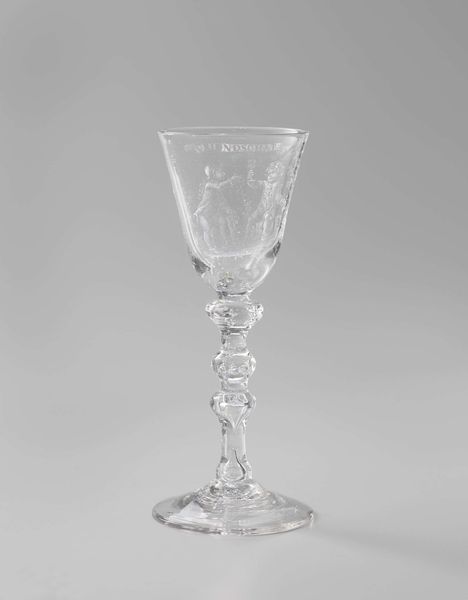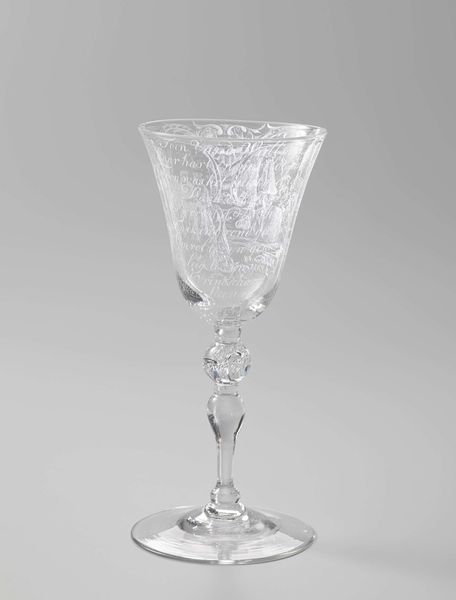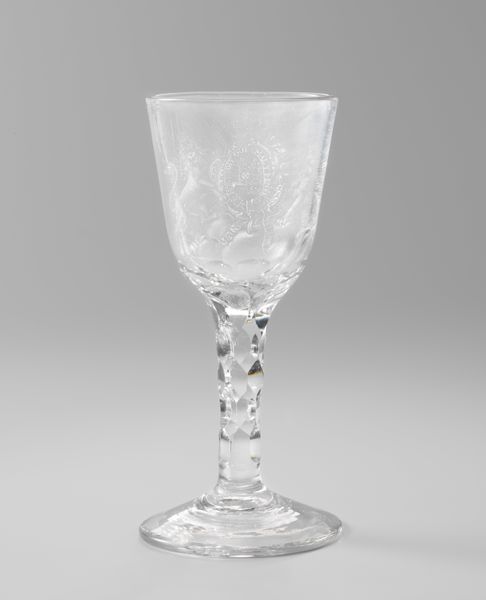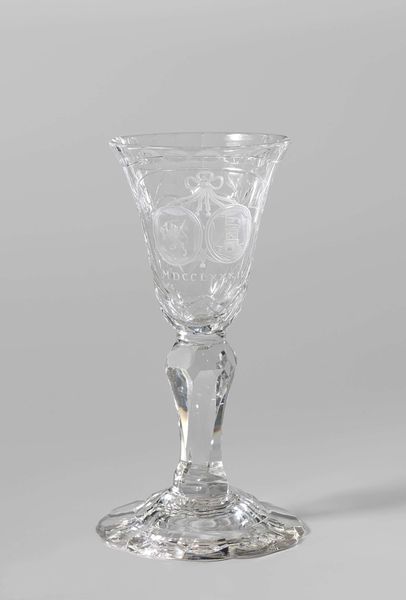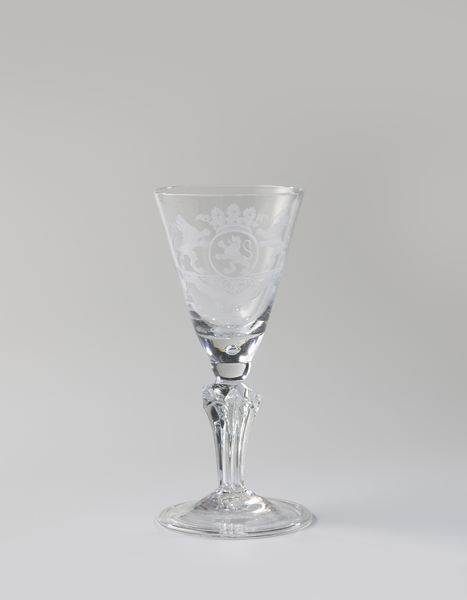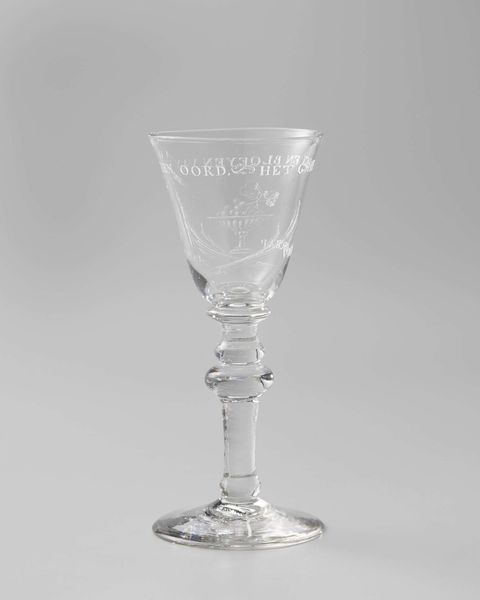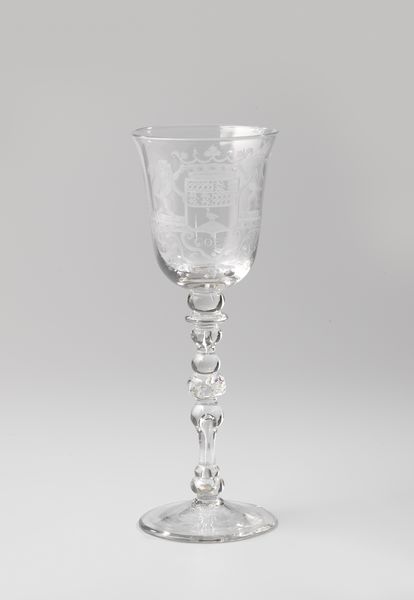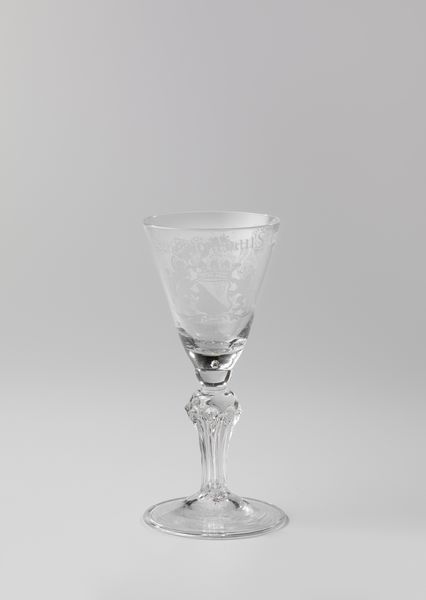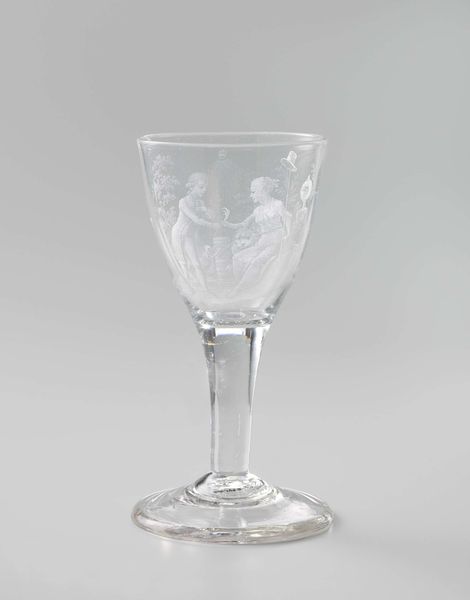
Dimensions: height 19 cm, diameter 8.9 cm
Copyright: Rijks Museum: Open Domain
Editor: Here we have a glass goblet made anonymously between 1760 and 1780, titled "Kelkglas met het wapen van de Republiek der Zeven Provinciën." I'm immediately drawn to the intricate design of the stem; it feels very deliberate. What strikes you about this piece? Curator: The stem, yes, is structurally compelling, particularly in how the play of light refracts through its repeated segments, creating a visual rhythm. However, my focus is immediately drawn to the goblet itself, specifically the engraved heraldic design. Observe how the artist uses line to create depth and texture, all within the transparent medium of the glass. It creates a tension between surface and depth. Do you perceive a deliberate strategy in the choice of such a translucent material to display such a historically resonant emblem? Editor: I hadn't thought of it that way. I was seeing the transparency more as delicate but now I see it gives the coat of arms an ethereal, almost fragile quality. Why not use porcelain for something more stable, or perhaps opulent? Curator: Precisely. The artist invites a critical dialogue with the very notion of power and permanence by rendering it in glass, suggesting, perhaps, that even the most powerful emblems are subject to fragility and change. The baroque styling amplifies this discourse through dramatic contours. Note how that contrasts with the minimalist design of the goblet's bowl. Editor: It’s funny; I hadn’t really considered how the material itself contributes to the meaning. It goes far beyond decoration. Thanks. Curator: Indeed. Paying close attention to material presence opens new dimensions of understanding and interpretation.
Comments
No comments
Be the first to comment and join the conversation on the ultimate creative platform.
